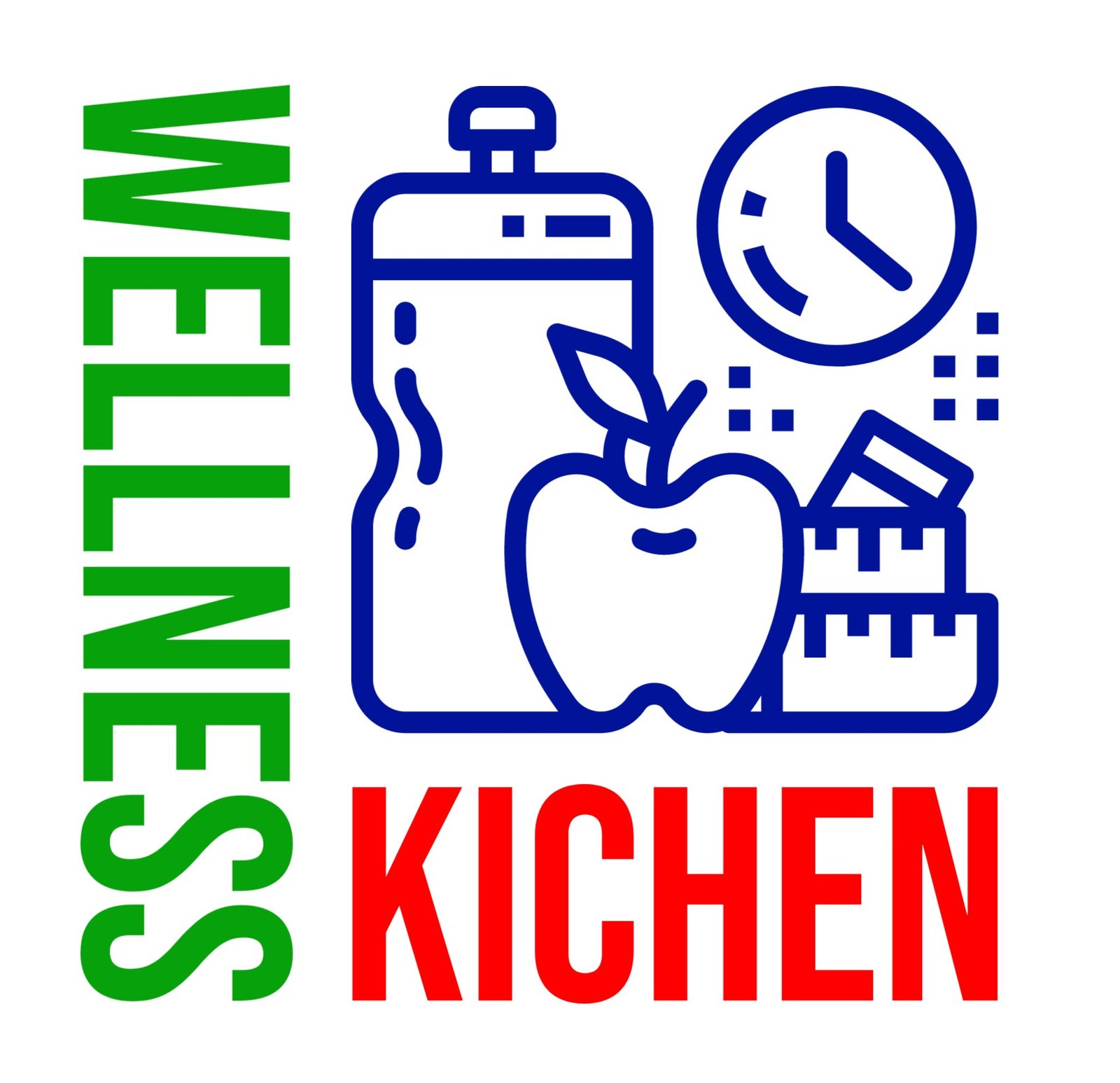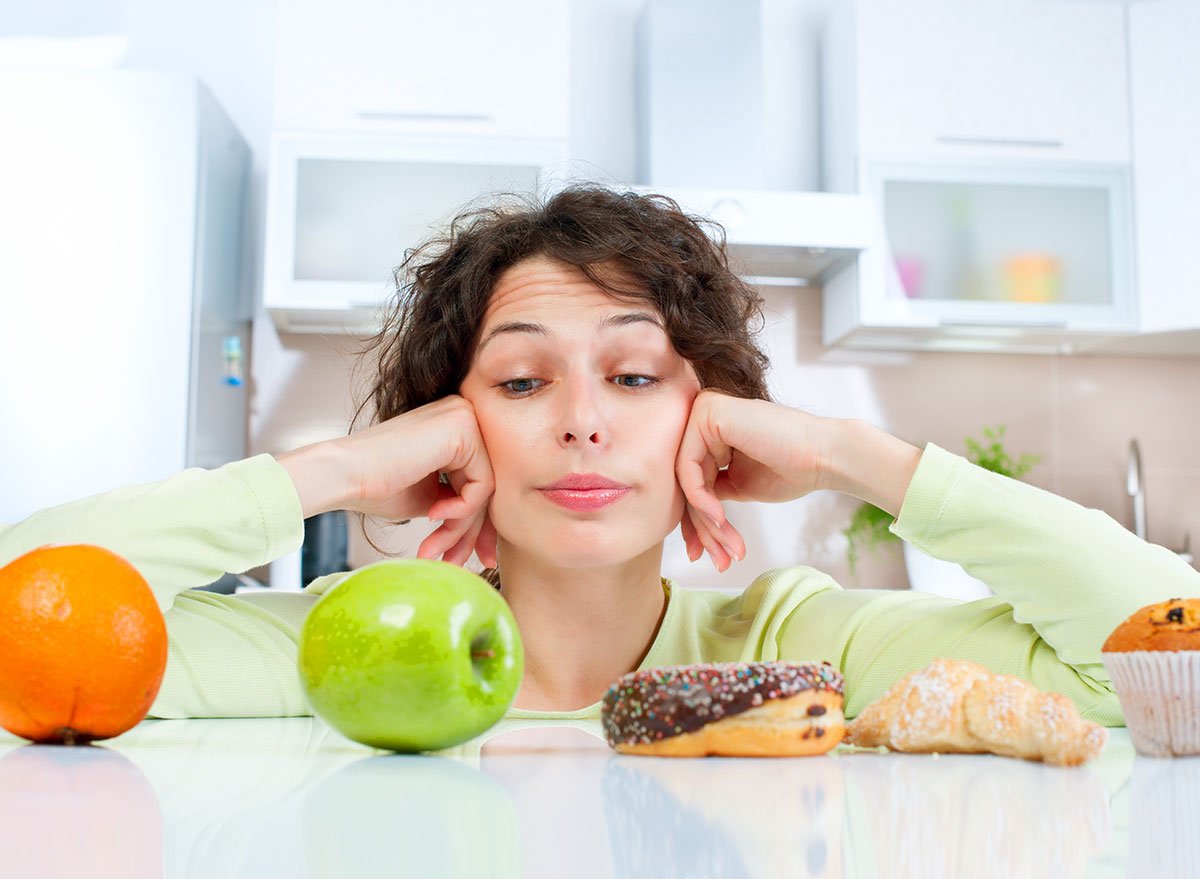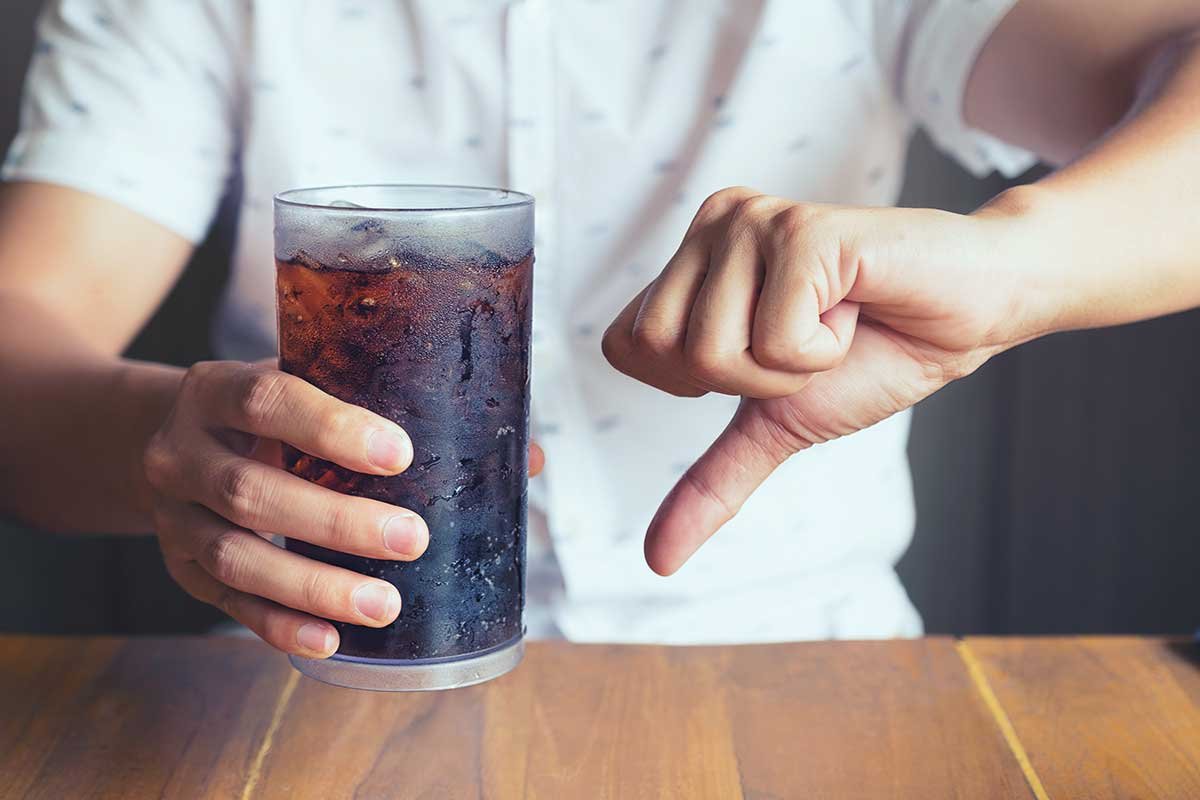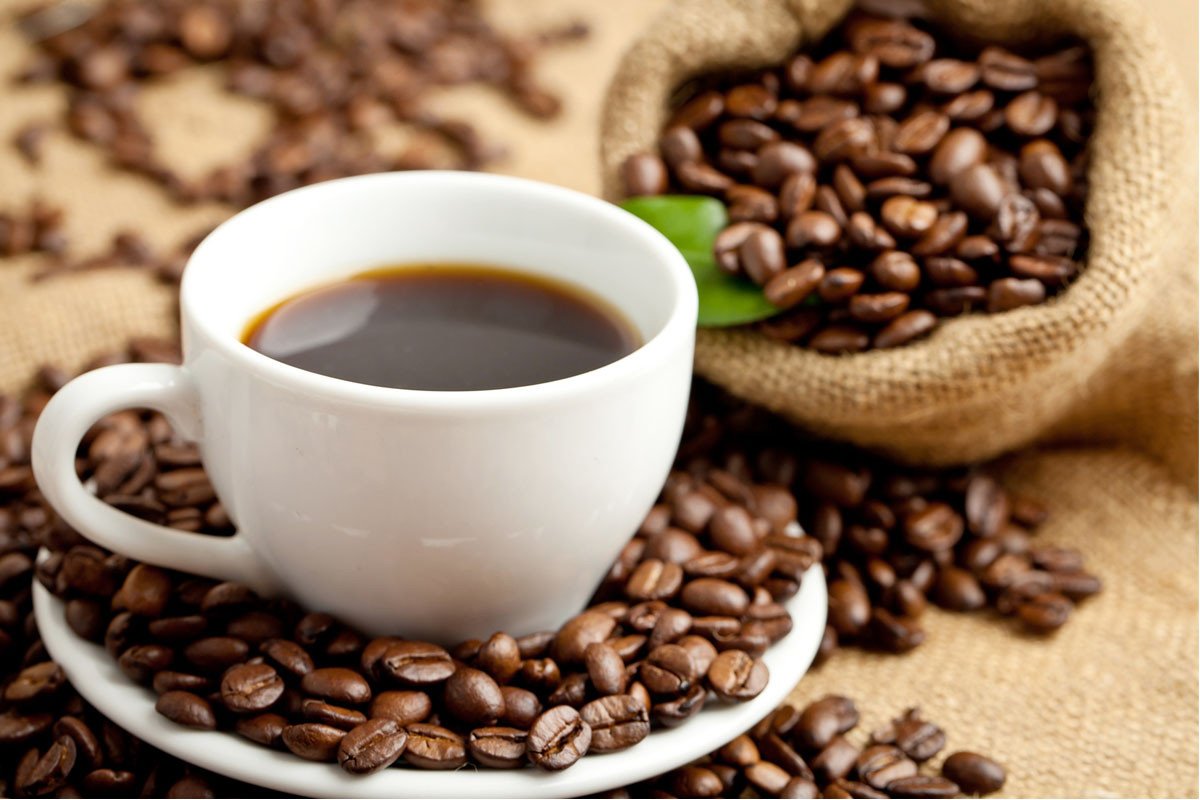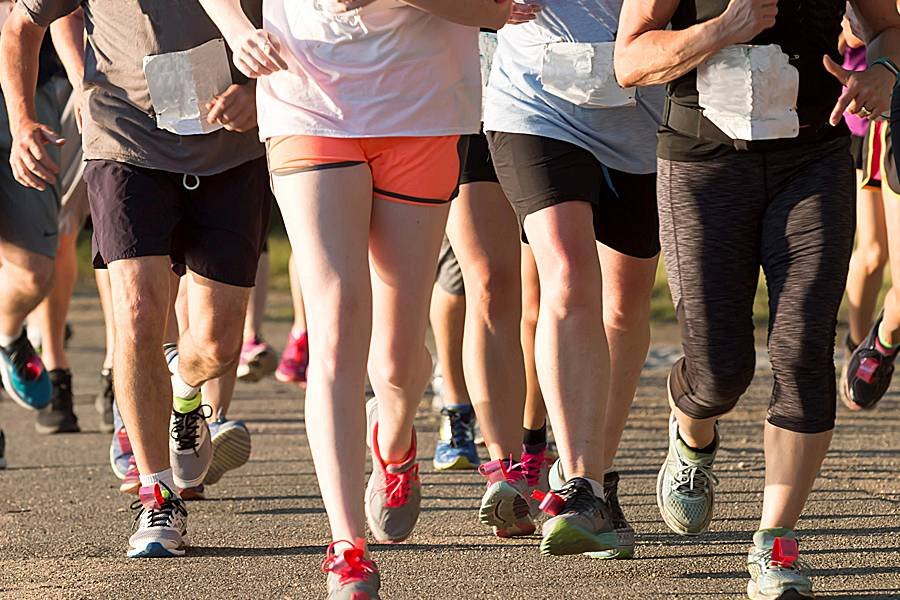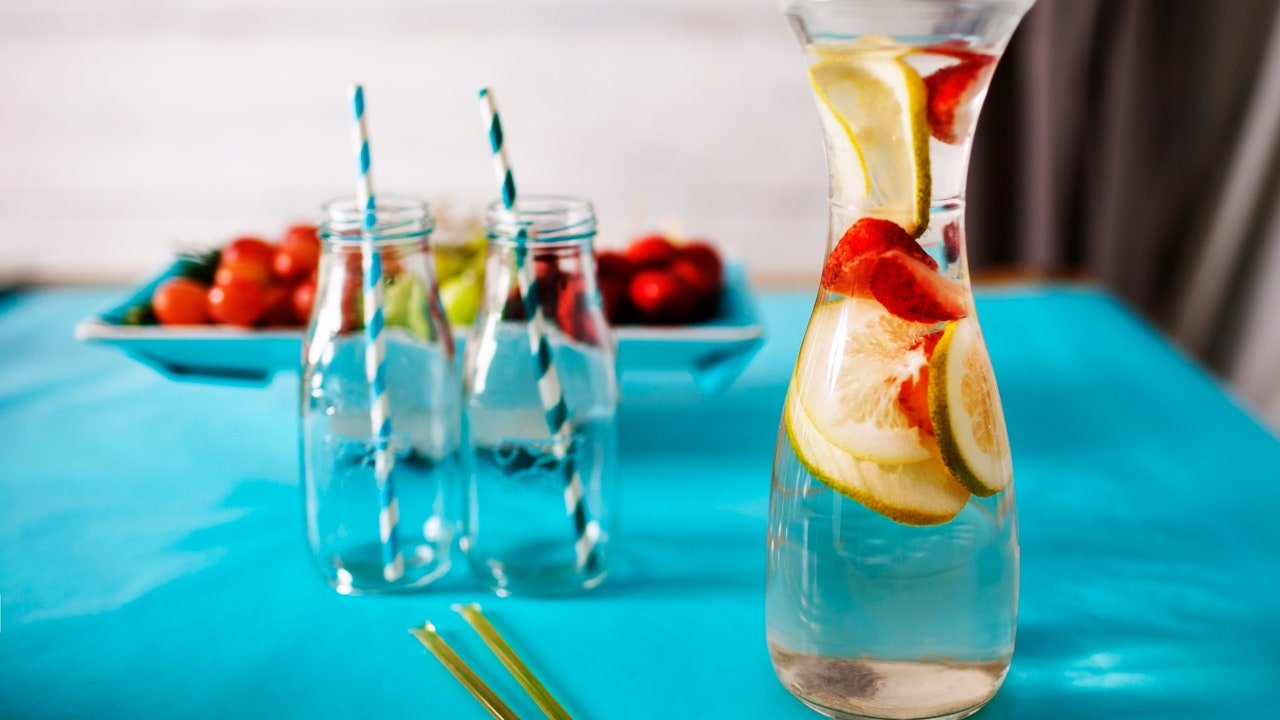Selfies, mood lighting, and more fresh tips that will help you drop pounds.
Ten years ago, we all thought the secret to weight loss was eating less and moving more—that’s what doctors told us, after all. And that’s true, but there are some secret weight loss tricks that can score you bonus points.
We now know that everything from our environment and mentality to our stress levels and biology influence the size of our fat cells—and our pants. Thankfully, a pool of forward-thinking experts have made it their mission to devise solutions to counteract newly-discovered weight loss saboteurs—and we’ve brought them right here to your screen.
Read on to discover these fascinating and effective weight loss tricks you probably haven’t tried before. One of them could be the key to that lifelong flat belly you’ve been looking for.
Keep a diary
And nope, it’s not about keeping a food or workout journal. A recent study revealed that when women who were unhappy with their weight completed a one-time, 15-minute writing exercise about an important personal issue, they went on to lose at least 3 pounds over a three-month period, while their counterparts who wrote about an unimportant topic gained 3 pounds. “Researchers believe that reflecting on values can serve as a buffer to the stress and uncertainty that leads to emotional eating and help in maintaining self-control in difficult situations. To reap the benefits at home, Forberg suggests pulling out a journal, setting the timer, and free-flowing about what’s important to you. “Write as though no one else will read it. Come clean with what’s bugging you. It may surprise and enlighten you.
Reorganize your plate
Most people think of their protein or meat as their meal’s main event, but it’s time to change the way you think. “Place flavorful vegetables front and center on lunch and dinner plates, accompanied by sides of protein and whole grains,” suggests Dietitians. By simply rearranging your plate, you’ll automatically consume fewer calories and take in more health-protective vitamins and nutrients.
Take a selfie
It turns out that a picture can be worth a lot of lost pounds. A recent study from a nutrition clinic in Colombia revealed that people who took routine photos of themselves while on a weight loss plan were more likely to finish the plan than the non-selfie snapping participants—and a whopping 71.3 percent met their goal weight. So instead of waiting for that one exciting “After” pic, get snappy with yourself right away and throughout the process.
Practice self love
Beating yourself up over food is a knowledge-behavior gap many unsuccessful dieters fall into. It’s important to try to stop the negative self-talk, says Dietitians. “I often suggest imagining that your desire to overeat is a lovable 5-year-old child. “You don’t want to berate or shame your appetite—that only leads to more dysfunctional eating.” Instead, treat yourself with respect, understanding, and affection, as you would that child.
Display the grocery store receipt
Post your grocery receipt on the refrigerator door. “This visual reminder will help you eat healthy items before they go bad,” says Dietitians. “Cross off the items you’ve eaten so you know what you have left waiting for you. “This is a really effective way to encourage yourself not to let things go to waste.
Order off the kid’s menu when doing carry out or delivery
Over the last two decades, restaurants have grown our portions all out of proportion. And we’d like to believe all restaurants will let you order off the children’s menu while dining in-house, but it’s not always that simple; it really is against some management policies—and you may never even see the mini menu in the first place. To skirt around the awkwardness, order off the kid’s menu when you’re doing carry out or delivery; it’s a great trick at lunch when you can pretend the meal is for your child or someone you’re a nanny for.
Chant a mantra
When it seems near impossible to have the willpower or to not get down on yourself about your efforts, try chanting a mantra that has a personal meaning to you, suggests Jen Comas Keck, personal trainer and Owner of Beauty Lies In Strength. If you’ve been working on your fitness, for example, something like “I feel stronger and healthier every day that passes” may be effective. While some mantras can be almost like yoga phrases, others are rules to live by.
Listen to music when working out
Sure, your time on the treadmill may seem like a great time to catch up on the news and your favorite sitcom, but doing so might make your cardio session less effective. According to a Journal of Sport & Exercise Psychology study, fast-paced, motivational music that includes phrases like “push it,” “I believe,” and “work it” can help you move faster and subconsciously motivate you to keep at it, which will supercharge your weight loss progress.
Do your grocery shopping online
“One of the easiest ways to ensure your pantry is stocked with healthy foods is to shop online. I can order everything from gluten-free oats and organic mustard to raw unfiltered apple cider vinegar and have them delivered to my door without rummaging through 10 health-food stores. It has changed my life and has allowed me to use that saved time for taking care of myself.”
Make one small grocery swap every week
Whether you’re shopping online or at your local grocery store, commit to making one healthy swap each week. Always buy a bag of chips as a treat? Leave them on the shelf and pick up one whole-food ingredient you’ve never tried before. “Not only is it good for your body, it’s good for your brain—plus, it will encourage you to get a little creative with your meals. “And who knows, you may find a new ingredient you love!” Some of favorite “risks” include nori (seaweed sheets) and jicama, a juicy and slightly sweet Central American root vegetable that looks like a potato!
Make healthy food super convenient
When we’re in a hurry or about to pass out from hunger, we’re going to grab whatever we can get our hands on first. For this reason, it’s important to make healthy foods like fruits and veggies the most convenient foods in your kitchen to pick up and consume, says Dietitians. Place pre-cut veggies in the front of your fridge, put a bowl with fresh, grab-and-go fruit on your counter and store treats like cookies and chips on a high cupboard shelf so they are out of sight and of mind. Better yet, keep these treats out of your home altogether. This makes giving into a passing temptation—or feeding a rumbling tummy with junk—much more difficult.
Set a carb curfew
If you love pasta, giving up carbs altogether can lead to progress-derailing binges down the line. Not to mention, giving up the food you love is no way to go through life—no matter how badly you want to drop a size. Instead of cutting out carbs totally, give yourself a carb curfew. “If they have a post-dinner snack, they stick to protein-rich, high-fat foods like almonds or 2% milkfat string cheese,” he explains. This is because, he adds, axing carbs at night flips the fat-burning switch by increasing the amount of fat-burning hormones released while we’re asleep.
Variety is the spice of life. The more variety we have, the more we eat. If you must keep packaged foods like cereal or crackers in the house, limit yourself to one kind. It’ll help you consume it more slowly.
Mentally binge
A recent Science study found that fantasizing about eating an entire packet of your favorite candy before indulging may cause you to eat less of it. For the study, researchers asked participants to imagine eating 3 or 30 M&Ms, and then invited them to help themselves to some of the candies as a “taste test.”
Pack on the protein
In addition to fiber, protein is another important player in the weight loss game because it requires more energy to burn than carbs or fats and thus keeps you fuller longer. In fact, in a study in the journal Appetite, researchers from the University of Missouri compared the satiety effects of high-, moderate-, and low-protein yogurts on 24 to 28-year-old women, and they found Greek yogurt, with the highest protein content, to have the greatest effect. For an added boost of protein and flavor, consider swapping Greek yogurt as a savory ingredient in some of your favorite recipes (it’s easier than you think!) and topping your Greek yogurt with some fresh berries.
Choose the high top table
If you’re noshing at a bar or simply have a tiny urban apartment, eating at a high top doesn’t seem like a big deal. But it’s all those other times it can make a difference. Instead of settling into a big cushy booth, skip the best seat in the house for a scientifically-proven better-for-you-seat at a high top. As it turns out, people with tables deep in the restaurant are 73 percent more likely to order that triple-fudge chocolate cake. Dietitians finds that people at these tall tables are inclined to eat a bit more healthily by ordering more salads and fewer sweets.
Open the blinds
Instead of dragging yourself through the dark to the coffee pot when your alarm goes off, open all the blinds! Studies show that people who get direct exposure to sunlight in the mornings between 8 a.m. and noon reduce their risk of weight gain, regardless of how much they eat. Researchers think it’s because the morning sun helps synchronize your metabolism so you burn fat more efficiently.
De-Motorize your life
Public transit and elevators may save you time, but they also prevent you from burning calories. Research shows that habits, like using a dishwasher rather than washing dishes by hand, using a leaf blower instead of a rake, and taking the elevator instead of the stairs results in the average person burning 111 fewer calories per day. That adds up to a whopping 10 extra pounds a year! The takeaway here is a simple one: de-motorize your life whenever possible—your gut is sure to thank you.
Redefine what m&m means
The best M&M ever? Meditation and magnesium. Chronic stress prompts a surge in the “fight or flight” hormone cortisol, which can tear down muscle fiber, impair blood-sugar metabolism, and boost the brain chemical neuropeptide Y, which sparks cravings. To keep cortisol levels down, meditate for 10 to 30 minutes daily. Calming practices normalize cortisol levels and boost levels of the appetite-suppressing hormone serotonin. To boost the benefit further, pop 250 milligrams of magnesium daily. The mineral aids muscle contraction and relaxation and has been shown to boost lipolysis, a process by which the body releases fat from its stores.
Know the 3-day rule
Eating like Gwyneth all week and then turning into the Cookie Monster on the weekend can make you worse off than you might expect. Here’s why taking a “vacation” from your healthy eating is so bad: Only eating unhealthy food for three consecutive days will not only cause you to gain weight and eat more unhealthy calories, but it can also shift your gut microbiota towards the same pattern that has been associated with obesity, revealed a study by Australia’s University of New South Wales. So be sure to keep cheat meals as cheat meals (not days!).
Never eat if you’re feeling emotional
To lose weight, you need to first learn the difference between emotional hunger, which comes on suddenly, and physical hunger, which comes on gradually and is often accompanied by physical cues like a growling stomach. First, realize that although a bad feeling will eventually go away; the calories you consumed while you were feeling down, will not. And the next time you’re feeling emotional, don’t try to mask your emotions or distract yourself. Experts say that truly experiencing your emotions will teach you that it’s possible to tolerate them head-on. Once you’ve done this exercise, it’s time to find a new, healthy coping strategy. Hitting the gym or calling a friend to vent are both solid options.
Invest in a good water bottle
Drinking more water can help fill you up and subsequently consume fewer calories, but if you’re sipping the stuff out of a BPA-laced plastic water bottle, you may be doing your figure a disservice. A 2011 Harvard study found that adults with the highest concentration of BPA in their urine had significantly larger waists and a 75 percent greater chance of being obese than those in the lowest quartile. To aid your weight loss efforts, steer clear of products that may contain BPA in the lining. Also, be particularly leery of plastics that sport a #7 recycling symbol on them—that’s a good indicator that BPA may be present.
Be careful about your produce
A similar situation as above holds true for fruits and veggies. If you aren’t eating organic or taking the time to rinse off the pesticides on conventionally grown crops, you could be derailing your valiant weight loss efforts. Research suggests exposure to pesticides may impair metabolism. “They have been shown to poison the mitochondria so it cannot burn fuel. “Fuel that is not burned turns to fat.”
Dine with a dude
It may not surprise you that women eat smaller portions when dining with male company, but what may shock you is the same is true for men with other guys. According to a study published in the Journal of Applied Social Psychology, women ordered items with 15 percent fewer calories when eating with men as opposed to women. Surprisingly, when men sat with other men (think: beer-and-wings night), they also ordered fewer calories—22 percent less, in fact! Researchers say the results speak to unconscious scripts about how men and women think they should behave in each other’s company.
Try active acts of kindness
If you have trouble motivating yourself to move more—which is one of the most effective ways to burn calories—commit to doing one active act of kindness daily. Knowing someone else’s happiness and wellbeing is on the line is a great motivator. Not sure where to start? Return your shopping cart to the store rather than leaving it in the parking lot and log those extra steps, pick up your own coffee instead of asking an intern to grab it for you so you stay moving during the sedentary workday, or give up your seat on the bus or subway so you can actively stand. Every bit of movement can get you one step closer to success!
Pick Green tea more often
We simply adore green tea for several well known reasons.
Makeover your Netflix and chewing
You’re on your fourth episode in your Netflix binge, but this time it’s going to be different. Forget digging your hand into a bag of chips or cookies. To lose weight, make sure you plan your snacks rather than reaching for whatever you feel like in the moment. This is critical because a University of Houston study found that the more TV people watched, the worse their food choices became. Plus, research published in the American Journal of Clinical Nutrition shows that people who eat while distracted eat 10 percent more in one sitting than they would otherwise.
Switch your cut of meat
Next time you find yourself craving a cut of beef, ask your butcher for a sirloin tip side steak instead of the filet mignon. Although the former isn’t naturally as tender as the latter, it’s a very flavorful cut of protein that your taste buds will love. Plus, the swap saves you 132 calories every 3.5-ounce serving to help with your weight loss! Use a chef’s secret and salt your meat for an hour at room temperature before cooking it. The salt draws out the juices of the cut and tenderizes the protein, making it more flavorful and tender.
Dim the lights before eating
Have trouble eating reasonable-sized portions? Try dimming the lights and putting on some soft music. According to a study published in Psychological Reports, soft lighting and music leads noshers to eat less and enjoy their food more. That’s what we call a win-win.
Use smaller bowls
Researchers found that people who were given larger bowls served and ate 16 percent more than those given smaller bowls. Take advantage of the visual illusion with belly-friendly mini bowls or ramekins.
Have soup as an appetizer
Eating an appetizer of a broth-based soup or even an apple can reduce total calorie intake over the course of the meal by up to 20 percent, according to a series of “Volumetrics” studies at Penn State. Make sure you grab for the red, not the green, apple—researchers find that red versions are one of the best fruits for weight loss.
Nix Morning Snacks
A recent study found that mid-morning snackers tended to snack more throughout the day than afternoon snackers, resulting in compromised weight loss efforts. Instead of looking for a mid-morning snack, make sure your morning meal is one of High protein meal.
